Crassula capitella plants are truly stunning succulent. Just as their name suggests, they look like “pagodas”. This plant stands out as one of the most attractive plants among all the succulents.
Crassula capitella plants tend to produce multicolored leaves which tend to form a tiered tower of pagoda. The prominent colors of these leaves are usually bright red and green.
Crassula capitella would be handy as it borders particularly on sunny rockery. So, if you are someone who wishes to add a unique succulent to your garden, this might be what you are looking for.
Crassula capitella also known as red flames, Red Pagoda, and campfire plant.
The origin of these plants is from South Africa. Crassula capitella is quite famous as a medicinal plant among the ancient south African people.
Usually, they dry the roots of these plants and later crush them into a powder. After that they use it to heal wounds.
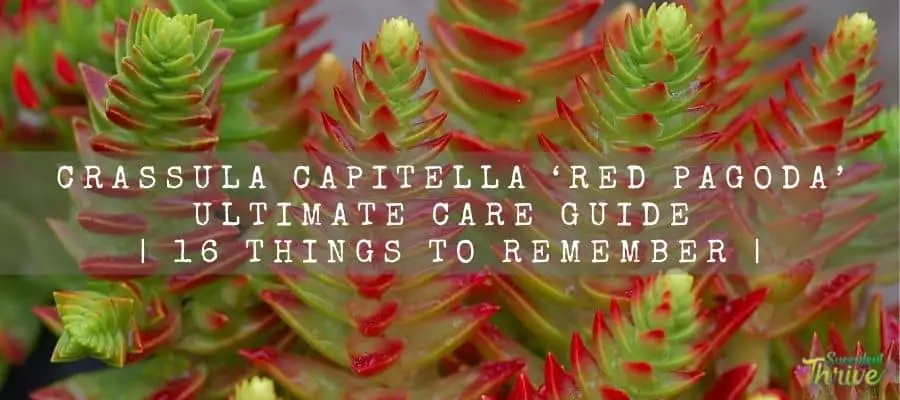
How do I identify Crassula capitella?
You could easily identify the Crassula capitella plants by several prominent characters. First they have evergreen leaves.
Further those leaves are small, chubby and tend to grow in a pointed manner. Not only that but also, their leaves stacking on top of each other whilst staying enclosed to the stem.
It is one of the remarkable formations in nature. Apart from that Crassula capitella plant leaves are narrow and look like a propeller.
In terms of the leaves’ color, they would be generally bright apple green in color as they grow.
Once you expose them to bright sunlight, their leaves’ tips will become vivid in multiple colors such as deep purple, blush red or even intense orange.
You could spot their leaves turning into those colors during winter. At that time, they can gain bright sunlight, cool and long nights.
Those conditions could cause them to turn their leaves’ margins into aforesaid colors. If you grow Crassula capitella in shade, they will remain olive green.
Apart from that Crassula capitella leaves form in rosette types. Usually, the leaves at the stem base grow in a tightly packed manner.
Further those leaves are larger than the leaves which are in the upper part of the stem. The leaves at the upper part of the stem are small and form in a free manner.
Crassula capitella would rise to 15-40 cm in height. If you manage to fulfill the right growing conditions for them, they would be about 1 meter wide.
However, their stem tips would still grow whilst facing the sunlight.
On the other hand You could identify the Crassula capitella by their flowering. They would usually produce clusters of small white flowers during summer.
Those flowers would resemble stars. Crassula capitella flowers are attractive towards pollinators such as bees and butterflies.
Apart from the above, Crassula capitella has an inflorescence coming out from its stem.
Size
Crassula capitella plants would rise to 15-40 cm. Further their radius would be 1 meter.
Growth
Crassula capitella plants are usually a rapidly growing set of plants.
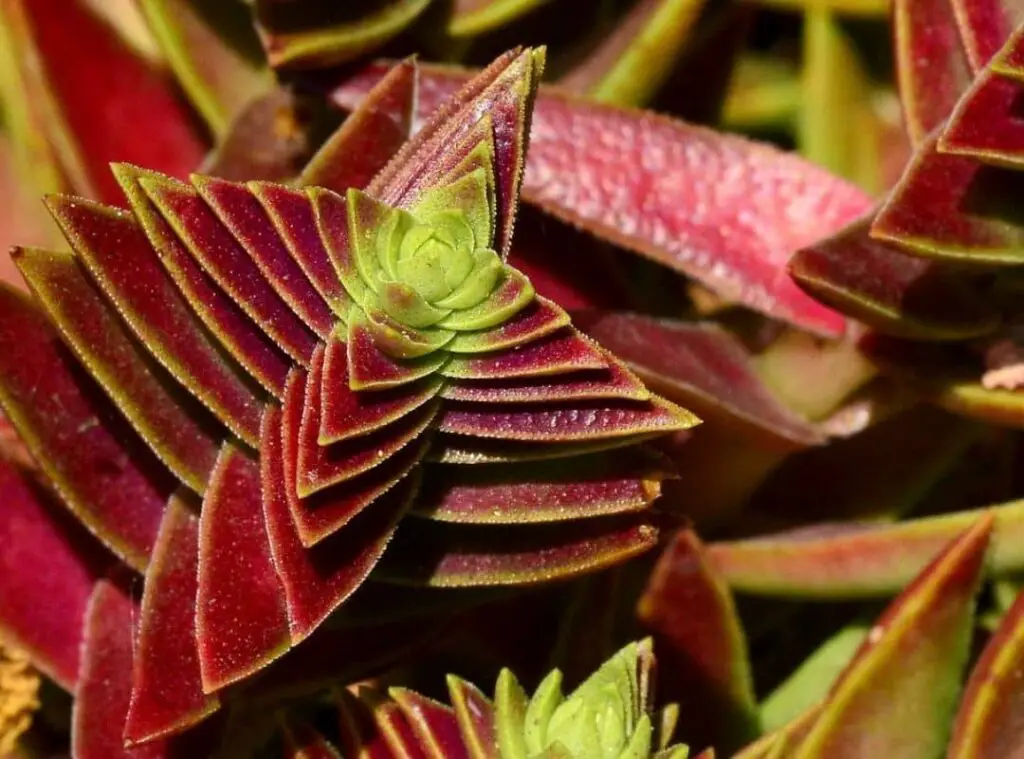
One look care guide
| Botanical Name | Crassula capitella |
| Common Name | Red flames Red Pagodacampfire plant |
| Plant Type | Succulent |
| Mature Size | 15-40 cm in height 1 m in width |
| Sun Exposure | Full sunlight to Partial sunlight |
| Soil Type | Well-draining, porous |
| Soil pH | Acid, Alkaline and neutral |
| Bloom Time | Summer |
| Flower Color | White |
| Hardiness Zones | USDA hardiness zones are 10a-10b |
| Native Area | South Africa |
| Toxicity | Toxic |
| Average price | 3 USD- 20 USD |
How do you take care of Crassula capitella?
Crassula capitella are not hardy plants. As such you should look after them well so that they can thrive well and grow vigorously.
Light Requirement
When it comes to the lighting limits of these plants, they would prefer to have full sunlight along with a little shade.
If you are growing these plants as outdoor plants, select a warm bright sunny spot in your garden where they get full sunlight and partial shade
On the other hand, if you grow them as indoor plants, I suggest you place them near a bright sunny windowsill.
However, if you wish to grow them somewhere else in your house, you could consider growing them closer to a grow light.
That will supplement Crassula capitella with extra light and with heat. Moreover, if you are relocating them from indoors to outdoors, you should slowly acclimate the plants to outdoor sunlight levels.
That is simply because the outdoor sunlight levels are a lot more intense than the indoor lighting conditions and if you expose them to outdoor plants at once, chances are that these plants would be traumatized.
If you wish to rotate them from indoors to outdoors, you could bring them outdoors for a couple of hours at first.
After that you could prolong the exposure time for outdoor lighting conditions gradually day by day.
That will allow the Crassula capitella to slowly adjust to the different lighting levels. To sum up, ideally you need to expose them to full sunlight in the morning and partial shade for the rest of the day.
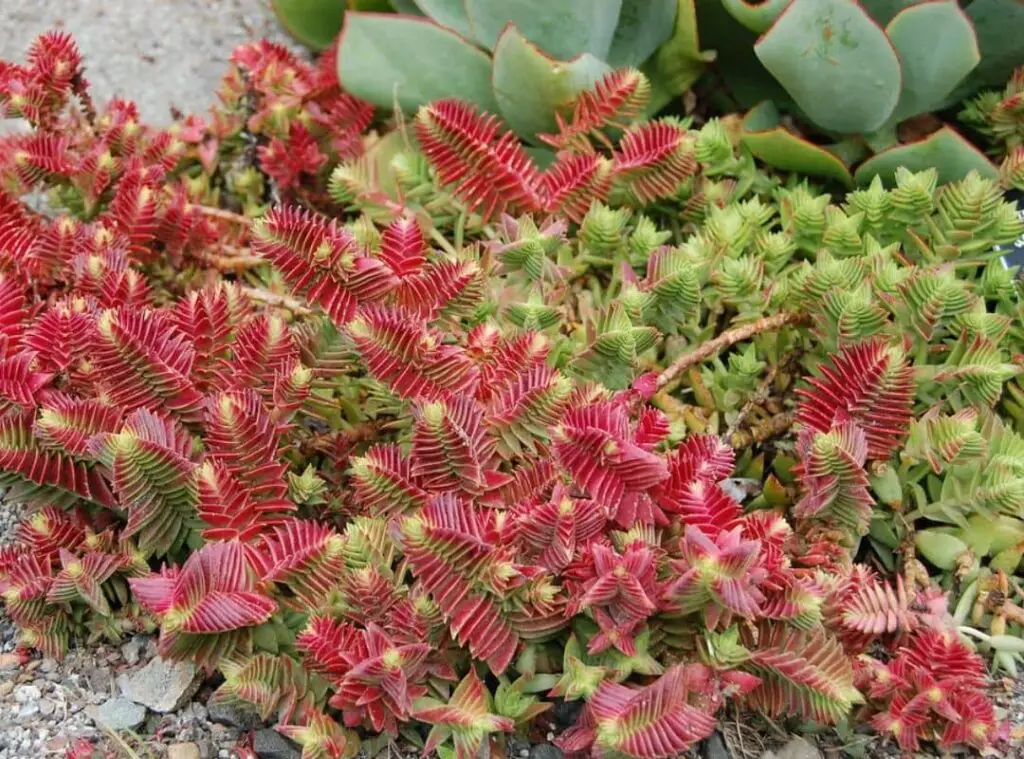
Temperature and humidity
In terms of the temperature of these plants, they would not like to get exposed to extreme cold conditions.
As such refrain from exposing them to heavy frost. If you expose them to temperatures below 30 degrees Fahrenheit, chances are that they would not survive any longer.
If there is any forecast of freezing temperatures, ideally you need to shift them indoors so that you could protect them from colder weather conditions.
Crassula capitella are fond of warm weather conditions. If you keep them indoors, you could just leave them in a place where they will be left at room temperature.
Further, do not expose them to dramatic changes in temperatures as well.
Is it cold hardy?
Crassula capitella are not cold hardy plants. As such if you live in a place where the temperature drops to 30 degrees Fahrenheit, it is best recommended to grow them as indoor plants.
Zone
Crassula capitella preferred USDA hardiness zones are 10a-10b. (1.1 °C (30 °F) – 1.7 °C (35 °F)
Watering Requirement
Crassula capitella plants have a very minimum water requirement. you have to water them less often. When watering, check the soil condition whether it is dry or soggy.
If it is dry, you may commence watering them. On the other hand, if it is soggy and damp, you need to wait for another couple of days and only after that water them.
In terms of frequency of watering them, you could water them once a week in general. If there are intense weather conditions, you could water them once every 4-5 days.
Moreover, if you are growing them as indoor plants in pots, you need to provide pots which have a draining hole in the bottom.
Consequently, it will allow the excess water to move through from the pot without getting stuck within the pot.
If the excess water retains the pot, it will cause the Crassula capitella plant’s roots to rot. Ultimately you will lose your beloved Crassula capitella plant too.
Moreover, you could consider placing a saucer of water under the pot for a couple of hours and that would be one interesting and productive way of watering these plants.
It will allow the roots to absorb the required amount of water from the draining holes in the pot. Having said that, do not forget to remove the saucer after a couple of hours.
Over-watering is a major concern when growing the Crassula capitella plants. As such I would rather tend to underwater the plants instead of over watering them.
Simply because you could revive the under-watered plants from a couple of drinks of water. On the other hand, it would be quite difficult to revive an overwatered plant.
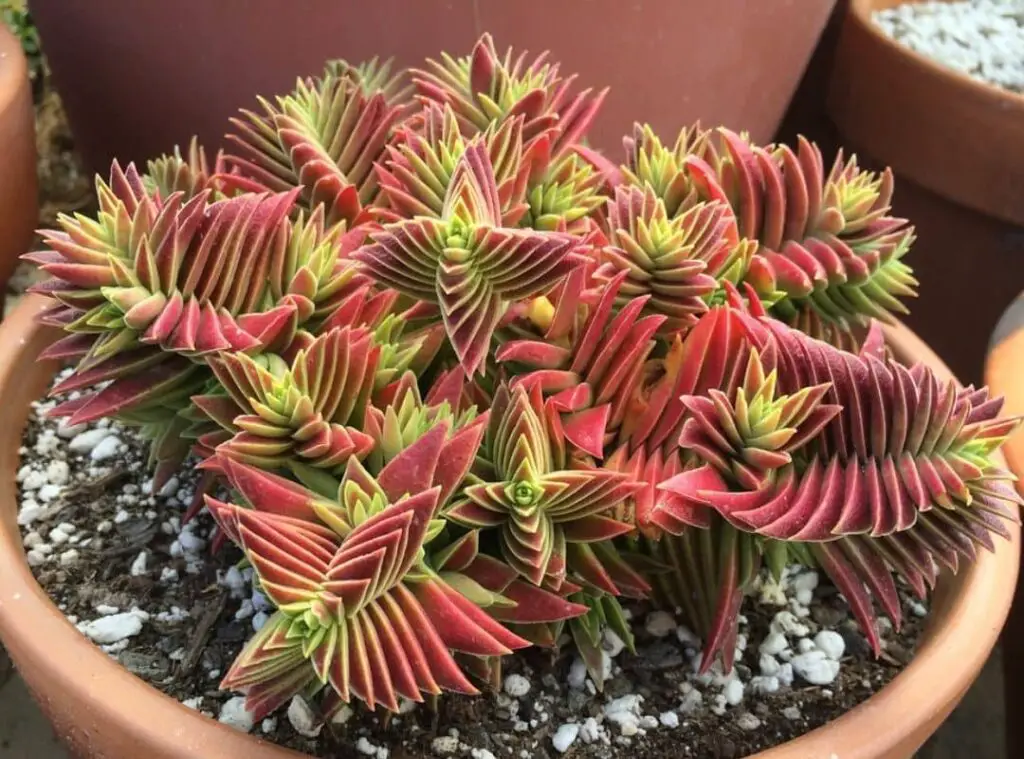
Soil Requirement Type / ph.
In terms of selecting the right soil mix to grow these plants, these succulents have a unique requirement, and it is in contrast to the rest of other ordinary plants’ soil requirement.
Crassula capitella wants a well-draining soil mix to grow vigorously. Growing them in the right soil mix is very crucial to keep the plant healthy.
Ideally the soil needs to be porous and light. Further it needs to have a proper aeration as well.
It is vital that your soil has essential nutrients to fulfil the nourishment of the Crassula capitella plants.
A mix of coarse sand pumice and perlite along with cactus potting medium would suit them the best. You need to blend them with one part each.
Flowering and Fragrance
Crassula capitella produces flowers in summer. They would produce clusters of small white blooms. Further those flowers would tend to take star shapes.
They are attractive towards pollinators such as bees and butterflies etc.
Pot size Potting and Repotting
You may have so many pots to grow these plants in the stores. However, terracotta pots would be the most appropriate pot type to grow them.
However, what is more crucial is to find a pot which has a draining hole at the bottom of the pot.
When it comes to repotting your plant, you should consider repotting them when you freshly purchase them from the stores.
Further you need to repot them after some time since nutrients would be depleting after a certain time due to watering.
Hence you need to grow them in a fresh soil mix to freshly nourish the Crassula capitella plants.
Not only that but also it will allow you to inspect the roots of your plants and see if there are any rotten or damaged parts of the plant, if you find any you may treat them as well.
When repotting you should make sure that you are doing it only in the warm season and do it only when the soil is dry too. You could follow the below steps when repotting them.
- Gently take off the plant from the pot without injuring it
- Secondly, get rid of the older soil by simply shaking the plant.
- Snip off the rotten and damaged parts of the Crassula capitella plant.
- Apply some neem oil or any other fungicide to treat the cuts.
- Plant it in a fresh pot along with some fresh soil mix and leave them for one week so that the roots could dry.
- When it is one week’s time you may start watering them lightly.
- Avoid over-watering as it could lead to unnecessary trouble such as root rots.
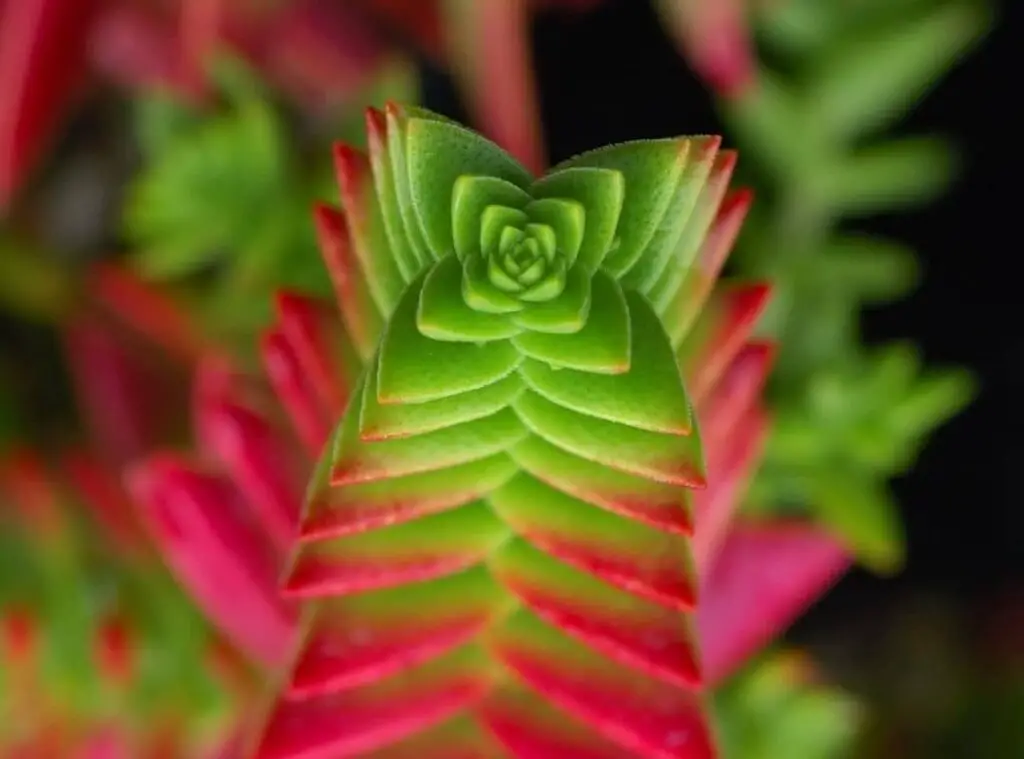
Fertilizer and time of year
When it comes to applying fertilizers for the Crassula capitella plants, it is best to go ahead with an organic compost fertilizer to feed them.
In terms of frequency, it would be more than enough if you feed them two times per year.
Dormancy
These plants usually go dormant when the temperature gets too intense in summer. If you water them less, it will worsen the conditions.
Other plants Pairs Well With
Crassula capitella plants can grow along with Agave, Echeveria and Sempervivum as well. On the other hand, you could grow them with summer dormant plants such as Aeonium, Aloe, Graptopetalum and with Kalanchoes.
Can it be toxic to pets
Crassula plants in general are toxic for pets.
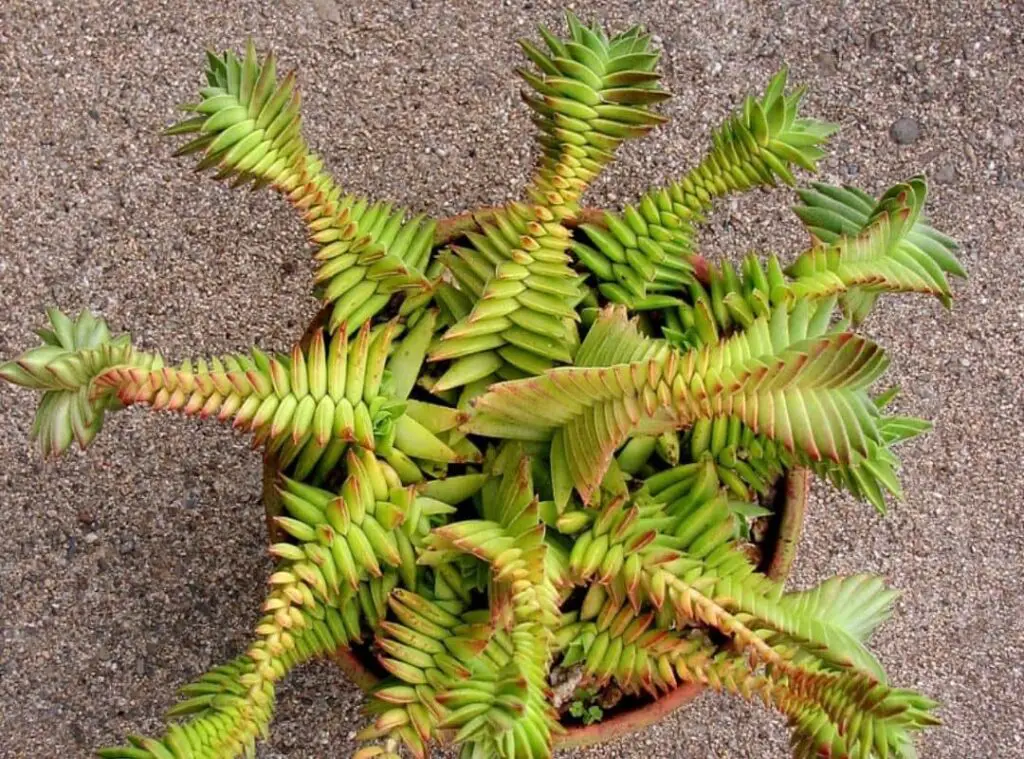
Common bugs and illnesses
Crassula capitella plants could come across several issues during their growth process.
These are prone to get affected with so many diseases and it is vital that you take care of them well and keep your plants under your observation on a constant basis too.
That will allow you to identify if there are any early signs of any disease of the plant.
Pests
Crassula capitella plants may also have to encounter pests’ attacks from bugs such as aphids and mealybugs etc.
These are two commonly spotted bug types. If you come across any Crassula capitella plant which has started to discolor or if you spot any small holes in the leaves, those could be early signs of pest’s attacks.
Mealybugs are tiny substances which you could spot in white. They tend to occupy the underneath of the leaves.
They could be so dangerous as they could multiply faster too. They could be so dangerous as they could spread faster to other plants in the garden as well.
To treat them you could use rubbing alcohol and spray it on the leaves. It is not harmful for the plants, but it will be fatal for the bugs living there.
Overwatering
Over-watering is one more major problem that Crassula capitella plants would face.
If you spot your Crassula capitella plants, leaves are becoming soft and mushy and tend to turn their leaves color into brown, it literally means you have given them an abundance of water for them.
When you provide excess water for them, it would make the plants difficult to breathe. Ultimately it would lead to root rot.
When you spot this, you need to immediately expose them to bright sunlight as that would help them to recover a bit.
Overexposure to sun
Sun damage is one more issue that Crassula capitella plants would go through. These plants are fond of sunlight.
However, if you expose them to bright sunlight for too long that will create sunburns in the plants. To remedy it, you should move them to a shady spot and start watering.
Special Care tips
There is nothing special you need to do when taking care of the Crassula capitella plants.
However, you should make sure that you are exposing them to at least 6 hours of bright sunlight and expose them to partial shade for the rest of the day.
You could consider pruning them once they complete flowering. Transplant them as essential. Further you may remove the older foliage whilst using a sharp clean knife.
That will allow the plant to look nice and neat when they produce the new foliage
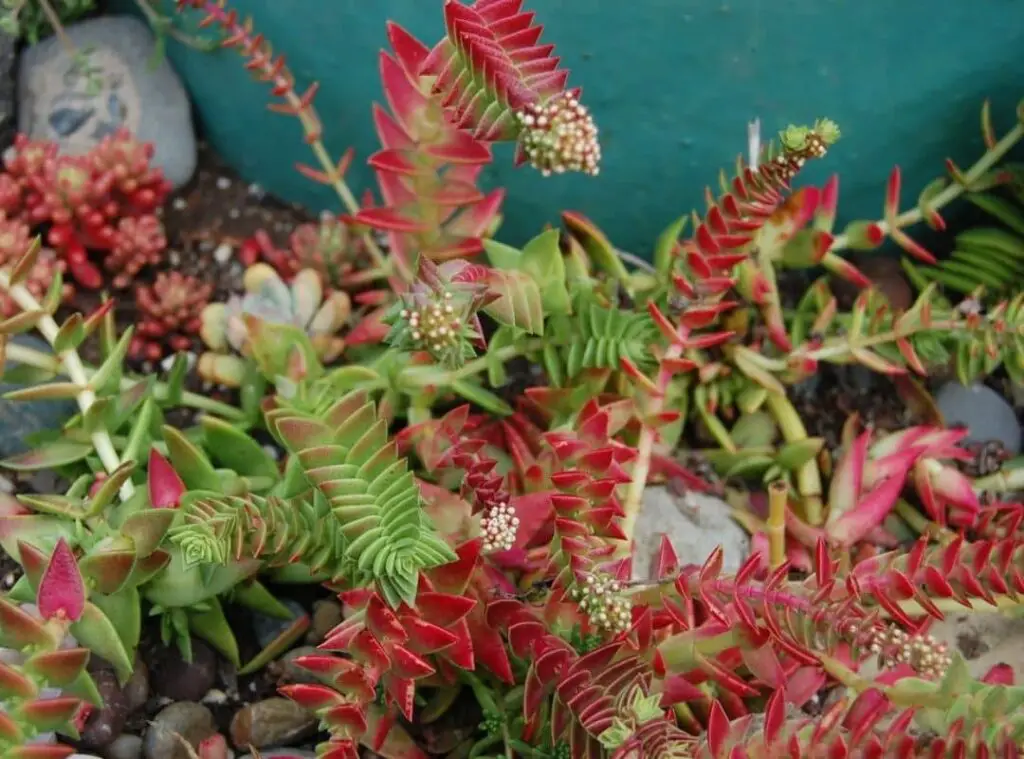
How to propagate Crassula capitella
You may easily propagate the Crassula capitella plants by using their offsets, lead cutting and by using divisions.
By division
If you want to try the division method, you need to wait until they produce new growth. Best time to do propagation is in spring.
To do this, you simply have to dig and remove the plants. You must use a sharp spade to do that. Start the process with cutting the roots.
When you cut, make the cutting downwards on the sides of the clumps. After that you could replant them in new pots.
By offset
If you wish to propagate them through their offsets, you need to make a cutting at the base of the stem of the mother plant.
Then let it dry for a few days so that the cut edges could heal. After that you may place the cut stems in a fresh pot along with fresh soil mix.
Start watering them lightly. Overtime, they will start to produce roots.
By leaves
You may use Crassula capitella plant leaves to propagate them too. To do that you have to first take off a few leaves which are plump and healthy.
When taking them off, you could simply twist them closer to the stem. Let those leaves become callous for a couple of days.
After that you could place them in a small dish. Provide them little water and keep them covered for a few days. It will take about 4-5 days to produce shoots.
Once you spot them forming shoots you could plant them in pots in a well-draining soil mx. That’s about it!
Crassula capitella plant benefits
They are useful for wedding decorations. Further they would be handy as ornamental gifts too. In addition to that they would be perfect containers and pots plants too.
In addition to that you could grow these plants in hanging baskets also.
Conclusion
Before wrapping up, trust you were able to enhance your knowledge on the Crassula capitella plants.
To sum up you simply have to provide their basic growing requirements and they will reward you with flourishing plants in return.
You could easily care for them. Further, their propagation is also easy too. So hurry up and start growing your own pagoda plant and share the experiences with us.
Read Next: Sempervivum Red Lion Succulent Ultimate Care Guide | 18 Things To Remember |
